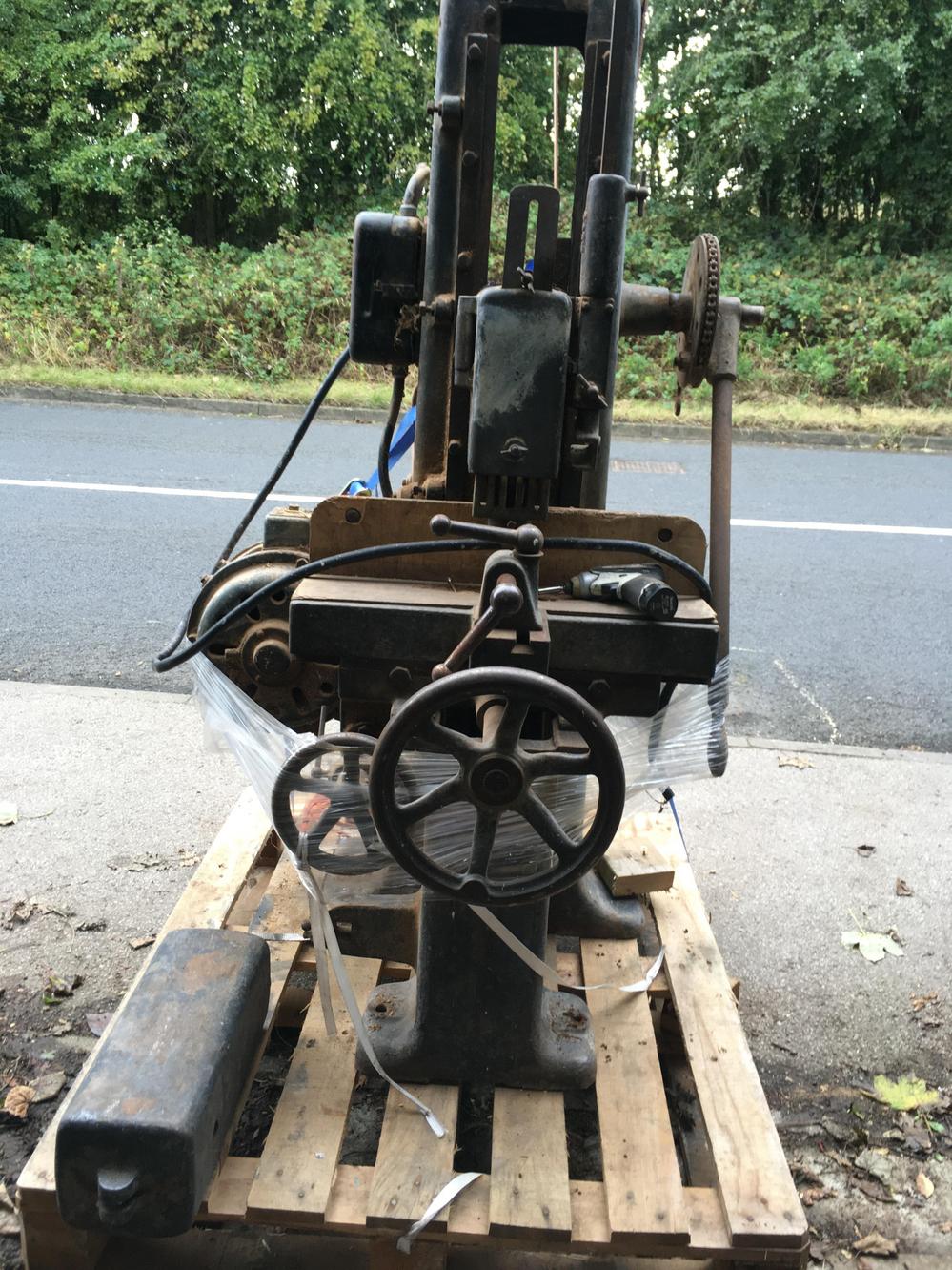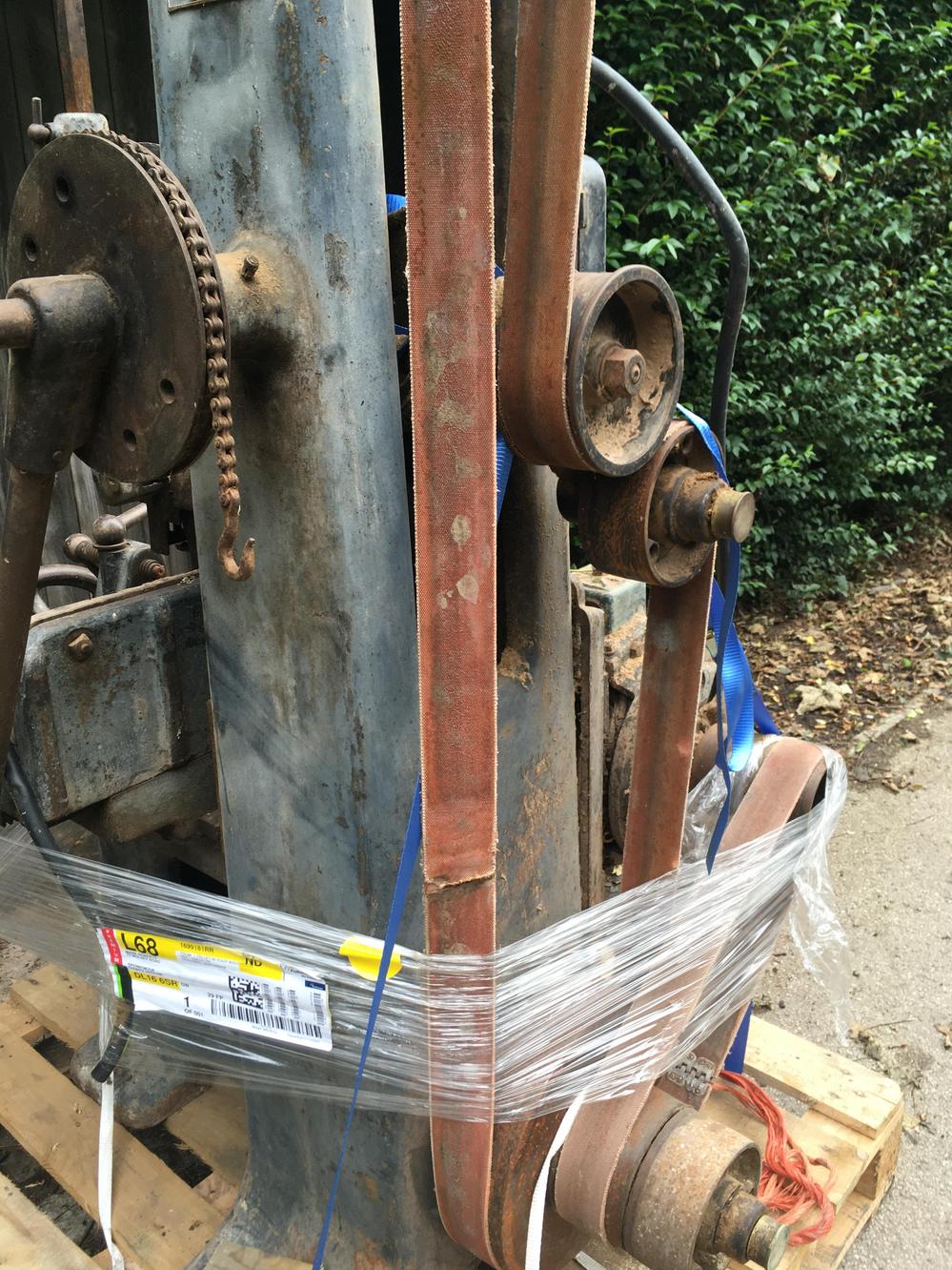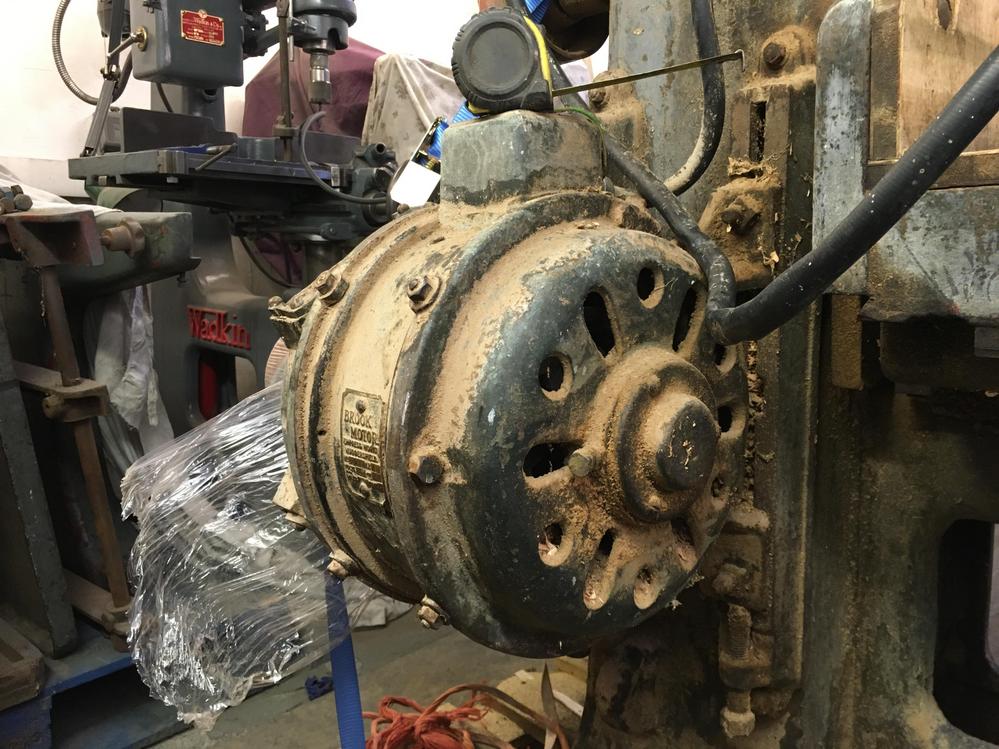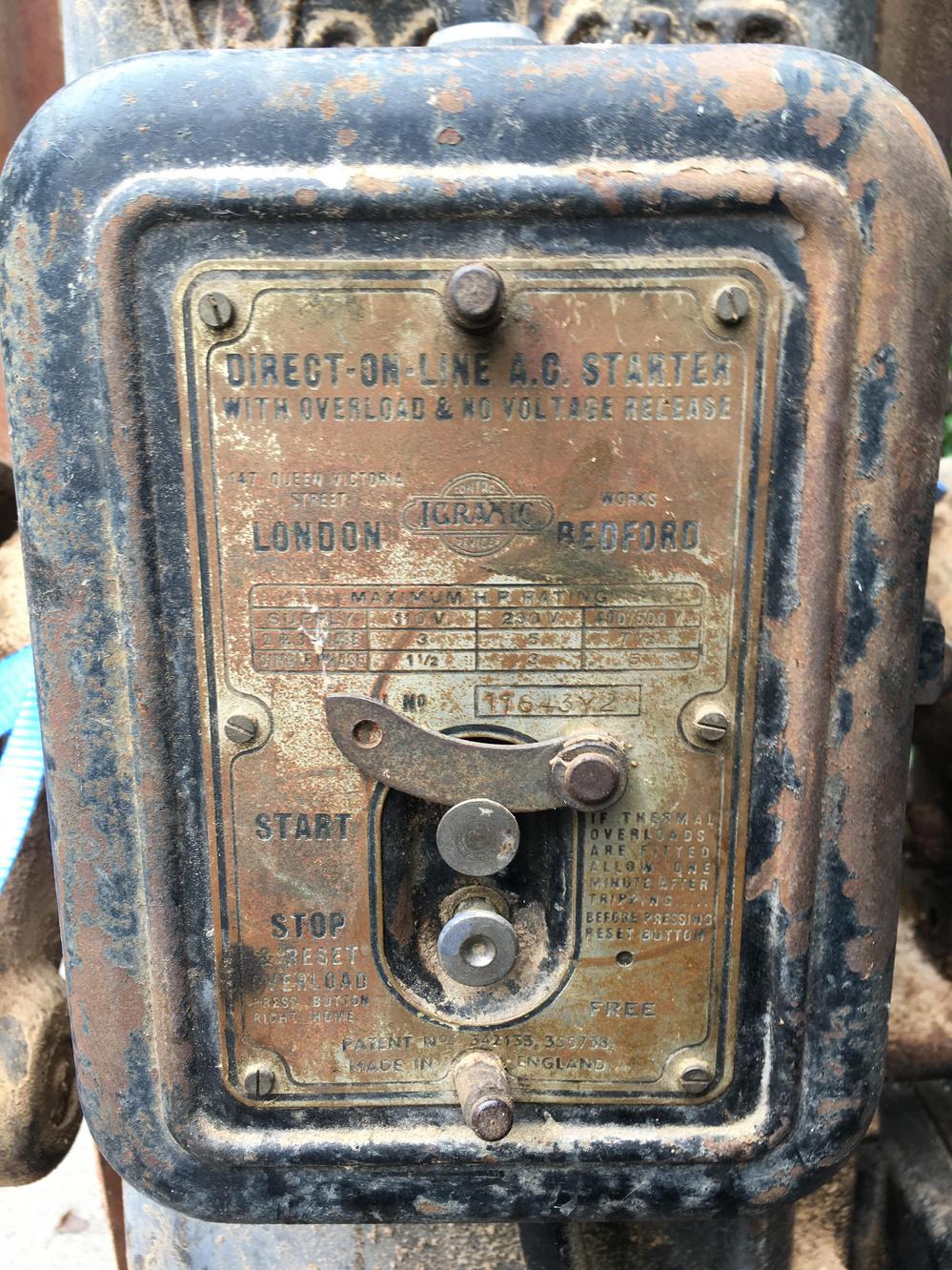Trextr7monkey
Established Member







Hi I don’t have a make or date of manufacture from working with old Drummond lathes I think easily 100 years old. I did start looking one night and collected a load of picturesand discover all kinds of firms from the past who had made mortisers but yours is the first one that is exactly the same. Haigh, Macpherson and Reynolds were the prime examples.Yes I reckon you’re right, and it’s interesting to see how it would’ve looked before the motor was added so now I can work out which are the "new" bits. Any idea as to year of manufacture?

This one doesn't do tennons, this has a removeable head so you can make it into a chain morticer.Hi Wallace, now that’s a beast it makes mine look like a toy!
Could you explain how it was used to cut tenons please?
I'm probably looking to get rid of it tbh CM although I'm quite attached to it. I just got a dust extractor from a forum member and space is getting tight. Tbf It works really well it just doesn't get the use here to justify its footprint. I have a good selection of heads which are probably more valuable than the machine as they are seemingly quite rare. Anyone interested feel free to twist my arm by pm.Haha bm, yes you certainly went through it with that one, it’s so similar but obviously a different make, the bottom half is very similar indeed but just not quite the same, are you still using yours?



Did you mean this sammyLook at this thread:
The Triumph
Thread starterNicknoxx Start date16 Oct 2011
Post no12.
Sam



I'd suggest it's a year or two older than that. 2000 is a bit recent......I estimate its age at about the turn of the century?...



If I'm not mistaken they are the often missing core pusher tools for clearing the through mortice out.Haha, Very nice thanks Van, that is a heavy piece of equipment, what are the two chisels on the right for? Ian
Enter your email address to join: